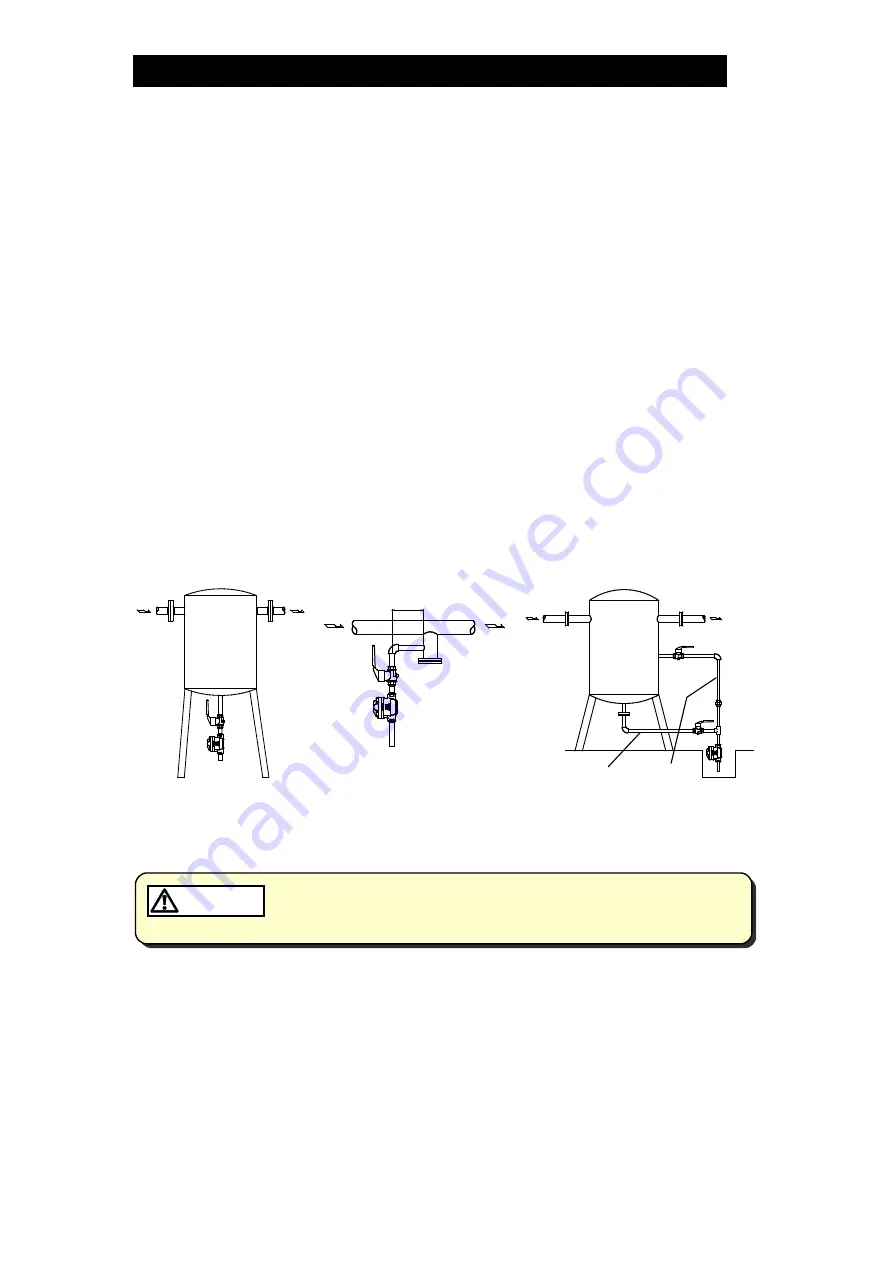
172-65393MA-03 (SS1VG) 4 Aug 2015
8
The Need for a Pressure-balancing Line
In principle, drain traps automatically and continuously discharge condensate that
flows in. However, air or gas caught in the piping or trap body may obstruct
condensate flow. This phenomenon is called “air binding”. Air binding occurs more
often in piping with long horizontal lengths, smaller diameters or multiple bends. To
prevent air binding and ensure air or gas can be displaced by incoming condensate,
a pressure-balancing line should be installed between the trap cover and the dry
portion of the receiver tank.
Since the SS1VG is installed vertically, a balancing line is not generally required.
However, to prevent air binding, follow the instructions below, using inlet piping with
a minimum nominal diameter of 15 mm (
1
/
2
in).
1) The inlet piping must be straight, vertical and as short as possible (see fig. 1).
2) If the point of condensate discharge requires horizontal piping, it should be
kept as short as possible, no more than 200 mm (8 in) long, then arrange
vertical inlet piping (see fig. 2).
3) If a longer horizontal length of piping is unavoidable, then a pressure-
balancing line must be installed (see fig. 3).
Figure 1
Figure 2
Figure 3
Receiver Tank
Air Main
Receiver Tank
200 mm (8 in) or less
Secondary Side Precautions
Take measures to ensure the proper handling, such as recovery or
dilution, of hazardous fluids discharged at product outlets. Outflow of
fluid or fluid leaks may lead to hazards such as flammable conditions or
corrosion, which may result in injury, fires, damage or other accidents.
CAUTION
Be sure to take precautions on the secondary side when using flammable, toxic or
other hazardous gases.
Sample precautionary procedures:
1. Flare method
2. Collection in a seal pot
3. Collection in a sealed container
Pressure-
balancing
Line
Inlet
Piping
































